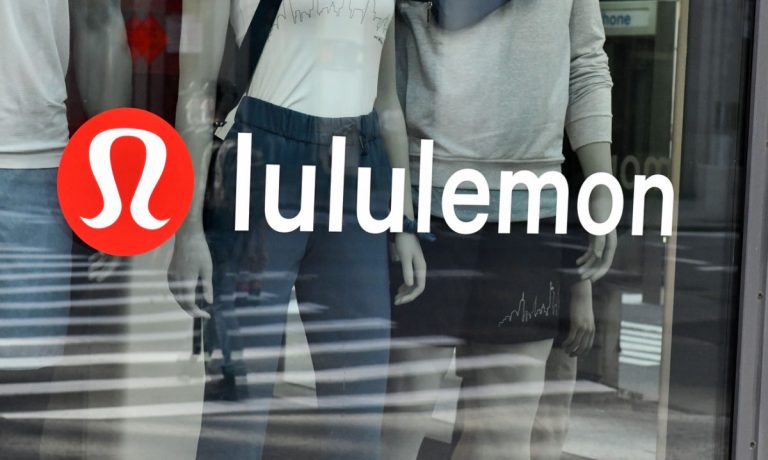
As the retail sector faces a complex mix of opportunities and challenges, Gap and Lululemon are charting distinct courses in their recent earnings reports. While Gap focuses on revitalizing its core brands during ongoing operational hurdles, Lululemon is capitalizing on international growth and stellar performance in athleisure.
Under CEO Richard Dickson, Gap has shown resilience in its efforts to rejuvenate its brand portfolio. The company reported a 5% increase in second-quarter net sales to $3.7 billion, driven by a 4% rise in store sales and a 7% boost in online sales, the latter representing 33% of total net sales.
“In comparison to where we were only one year ago, we are in a stronger position across key metrics that matter — including net sales, margins, and our cash position – and we are making consistent progress in the reinvigoration of our brands,” Dickson said during the company’s second-quarter earnings call Thursday (Aug. 29).
Its recent results show that Gap’s strategic focus on revitalizing its core brands, particularly Old Navy, Gap, Banana Republic and Athleta. Old Navy posted a 5% increase in comparable sales, marking four consecutive quarters of growth. Gap’s comparable sales rose 3%, reflecting five quarters of market share gains, while Banana Republic saw flat comparable sales as it works on brand repositioning. However, Athleta experienced a 4% decline in comparable sales due to lapping previous heavy discounting.
“We remain focused on driving relevance and revenue by executing on our brand reinvigoration playbook,” Dickson said. “We are building stronger brand identities, supported by trend-right products, amplified through more compelling storytelling with an innovative media mix that is translating to greater cultural relevance. We are working to provide our customers with a more engaging omnichannel experience and aim to execute with excellence. Each brand is at a different point in the process and I’m encouraged by the improvements we are driving across the portfolio.”
Gap’s approach centers on enhancing brand relevance and consumer engagement through refreshed marketing strategies and trend-focused product assortments. The company has been making strides in creating more compelling storytelling and improving omnichannel experiences.
Dickson highlighted successful initiatives such as the “Linen Moves” campaign, which has boosted linen sales significantly. The focus on creative campaigns and collaborations, including the DÔEN and Madhappy partnerships, underscores Gap’s commitment to reinvigorating its brand presence.
“We are encouraged to see more stability across our men’s business with improved depth of wardrobe and a more distinctive style,” Dickson said. “We are working to win in women’s with better assortment planning, a focus on key items, and improved fit. There is still significant work to be done, but we are continuing to perform while we transform Banana Republic men’s and women’s.”
Dickson became Gap’s CEO one year ago, something he referenced as he looked forward.
“Last August, in my first remarks to you as CEO, I told you that I was intent on leading an exciting new chapter for Gap, one that celebrates our past as we pioneer an extraordinary future,” he said. “The potential of our brand portfolio was clear to me, as was the need to reposition the company for sustainable, profitable growth.”
Conversely, Lululemon is riding a different trajectory.
While the athleisure giant reported a 7% increase in net revenue, reaching $2.4 billion, coupled with a 2% rise in comparable sales, international sales stole the spotlight as they soared 29%.
During the company’s second-quarter earnings call on Thursday (Aug. 29), CEO Calvin McDonald attributed this growth to the company’s successful expansion efforts, particularly in China, where sales rose 37%.
As comparable sales decreased 3% within the Americas, international comparable sales increased 19%. Lululemon’s international success underscores a high demand for its products outside North America. The company’s international revenue growth aligns with its strategic objective to quadruple its international revenue by 2026. In particular, the performance in China reflects Lululemon’s effective omnichannel distribution and localized approach, including community-focused events like the Summer Sweat Games.
Lululemon saw notable revenue growth in various merchandise categories during the second quarter, with women’s products increasing by 6%, men’s by 11% and accessories by 7%. Internationally, the company achieved a 29% rise in revenue, bolstered by a 34% increase in Mainland China (37% in constant currency) and a 24% growth in the Rest of World segment.
“We continued to see strength in our international markets as the lululemon brand resonates with guests around the world,” McDonald said. “Growing our business outside of North America remains one of our largest opportunities, and we remain on track to quadruple international revenue from 2021 levels by the end of 2026.”
McDonald noted a slowdown in women’s, saying the most significant factor was a product plan that “introduced less newness across core and seasonal styles. By newness, I’m referring to the seasonal updates we bring into the assortment, typically expressed as color, print, patterns and silhouettes. As we have learned more, it’s become clear to us that this reduced newness, which is below our historical levels and stems from earlier product decisions, has impacted conversion rates given the fewer new options available to our female guests. While this reduction was seen across our women’s assortment, it had a more pronounced impact in bottoms and in our online channel. The newness that we had performed well. We simply did not have enough to inspire her to purchase.”